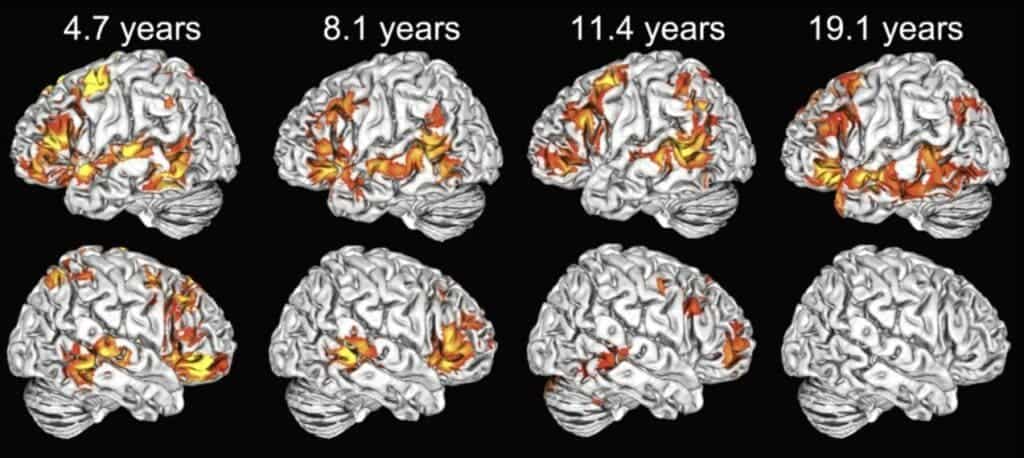New research could uncover why children recover more easily from neural injury compared to adults.

Image credits Elissa Newport.
Very young human brains use both their hemispheres to process language , a new paper reports. The study focused on computer imaging to see which parts of infants’ and young children’s brains handle such tasks. According to the findings, the whole brain pitches in, rather than a single hemisphere as is the case for adults.
Whole-brain experience
“Use of both hemispheres provides a mechanism to compensate after a neural injury,” says lead author Elissa Newport, Ph.D, a neurology professor at Georgetown University. “For example, if the left hemisphere is damaged from a perinatal stroke—one that occurs right after birth—a child will learn language using the right hemisphere. A child born with cerebral palsy that damages only one hemisphere can develop needed cognitive abilities in the other hemisphere. Our study demonstrates how that is possible.”
Human adults almost universally process language in their left hemisphere, a process known as ‘lateralization’. This has been shown by previous studies using brain imaging as well as from observing patients who suffered a stroke in their left hemispheres (and lost the ability to do so).
Very young children, however, don’t seem to do the same. Damage to either hemisphere of their brains is unlikely to result in language deficits, and they have been noted to recover language even after heavy damage to their left hemispheres. Why this happened, however, was unclear.
“It was unclear whether strong left dominance for language is present at birth or appears gradually during development,” explains Newport.
The team used functional magnetic resonance imaging (fMRI) to show that adult lateralization patterns aren’t established during our early days. Specific brain networks which cause lateralization are only complete at around 10 or 11 years of age, Newport adds.
The team worked with 39 children aged 4 through to 13, and 14 adults (aged 18-29). They were given a sentence comprehension task and researchers examined their patterns of brain activation as they worked. The fMRI data was recorded for each individual’s hemispheres separately and was then compared between four age groups: : 4-6, 7-9, 10-13, and 18-29. The team also carried out a whole-brain analysis for all participants to see which areas were activated during language comprehension across ages.
As an overall group, the team reports, even young children showed left lateralization of the process. However, a large number of them also showed heavy activation in the right hemisphere, which was not seen in adults. This area of the brain is involved in processing the emotional content of conversation in adults, the team notes.
Newport says that “higher levels of right hemisphere activation in a sentence processing task and the slow decline in this activation over development are reflections of changes in the neural distribution of language functions and not merely developmental changes in sentence comprehension strategies.”
The authors believe that younger children would show even greater involvement of their right hemisphere in comprehending speech. They plan to further their research by studying the same processes in teenagers and young adults who had a major left hemisphere stroke at birth.
The paper “The neural basis of language development: Changes in lateralization over age” has been published in the journal Proceedings of the National Academy of Sciences.






